We have developed WebMedea – an analytical tool for more effective decision-making not only for malls and marketers
In 2015, Michal Rost and Josef Smolka had a vision of a tool that would overcome the limits of contemporary SEO and web analytics tools and help companies better understand the online world. The fundamental impetus was that the existing tools we were using at TRITON IT were unable to effectively display the necessary data insights we needed to move our clients forward in a competitive environment. That's why WebMedea was created, a web analytics tool with unique features and a wide range of uses.
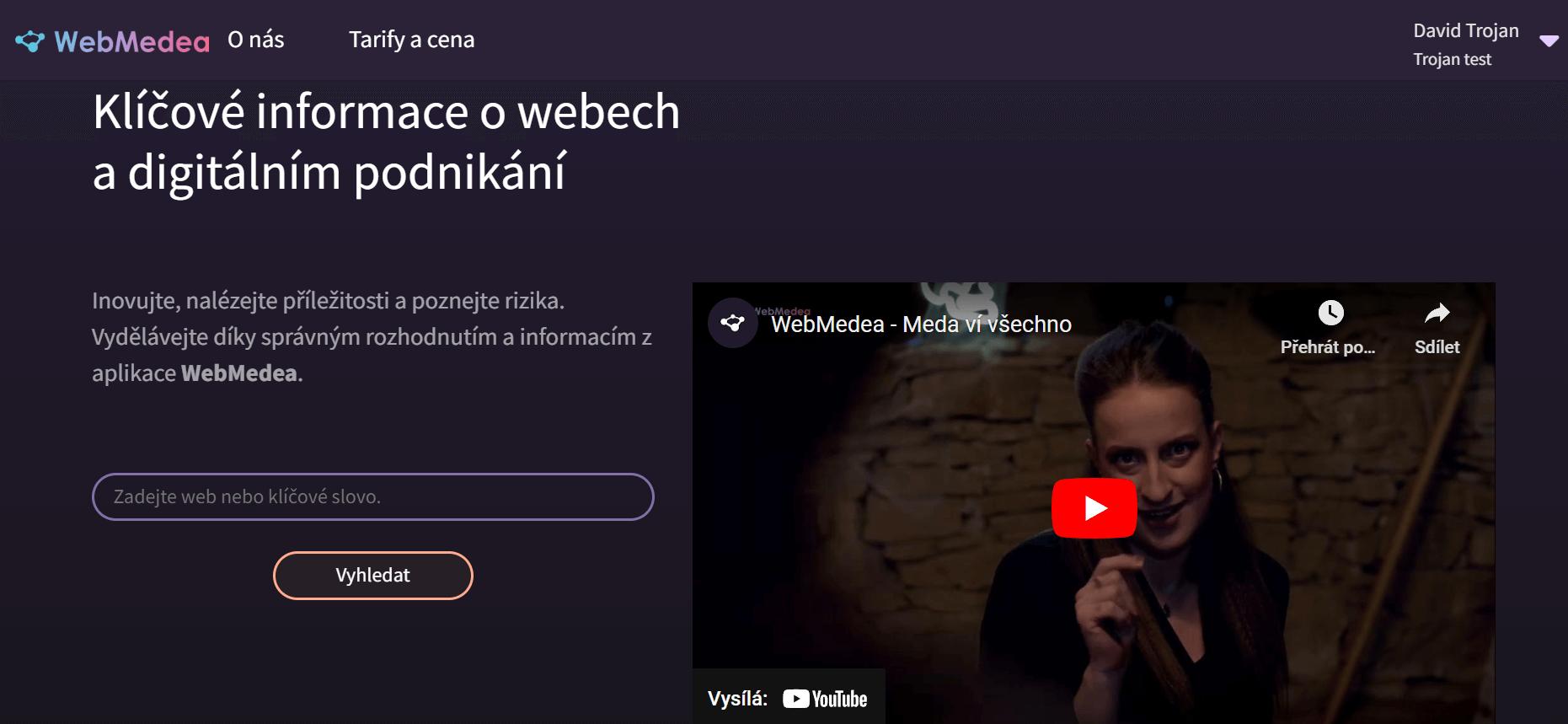
A tailored application for marketers and malls
The brief was determined by the team's years of experience in online marketing, programming server-side microservices applications, big data processing and data reporting. There was a need for a tool that would provide comprehensive data on website, SEO and search and merchandise PPC campaigns, offer comprehensive views on individual keywords and their sets, allow detailed competitive analysis, be intuitive and easy to use, and offer a wide range of features for advanced analysis.
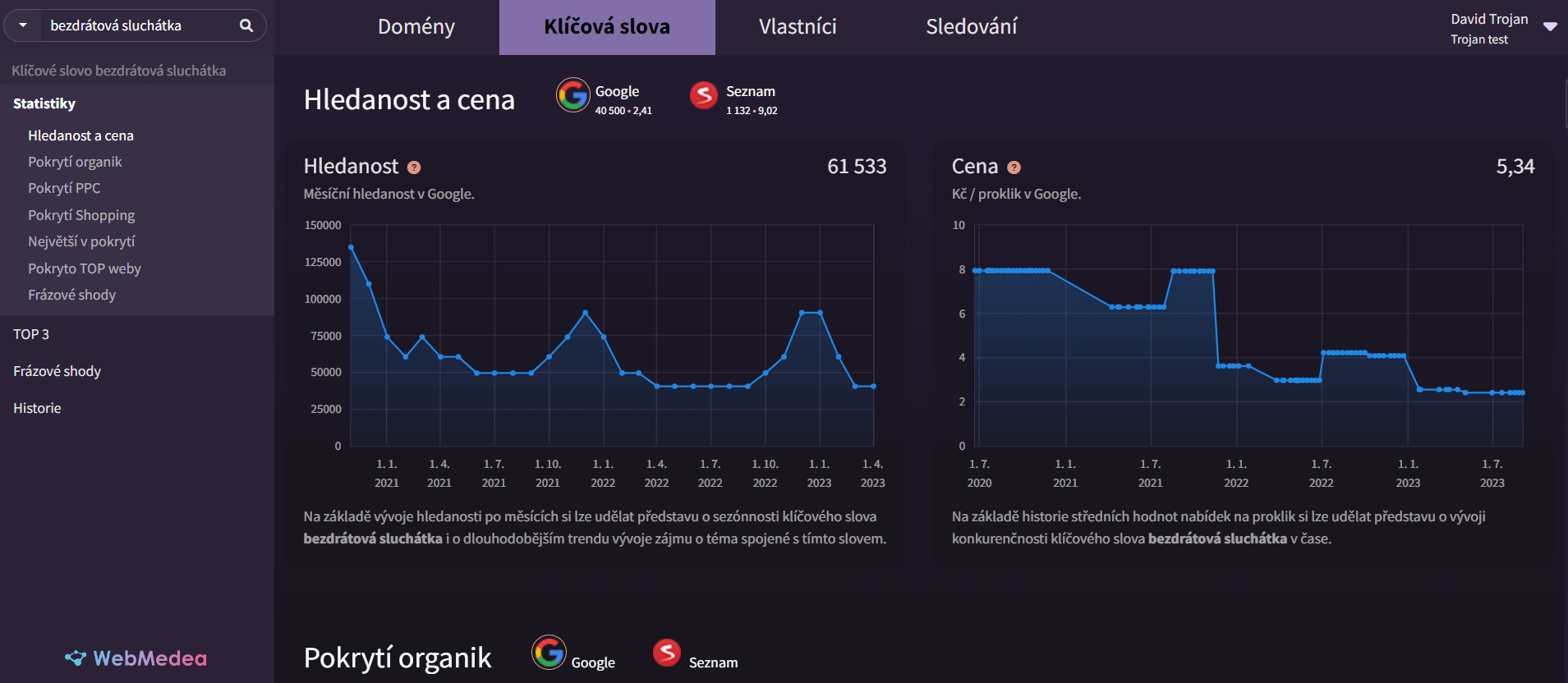
The development and evolution of WebMedea is carried out within the company WebMedea services, which we founded in 2016. In 2017, we successfully completed a pilot of the tool with Deloitte. Štěpán Húsek, Petr Kouřil and Petr Brich from Deloitte directed us to create marketing analyses and studies based on data from WebMedea. Blue Pyramid, for example, has become a regular subscriber of our analyses. And it was from the sales of such studies and analyses that we financed the development and completion of the end application for the wider public, which was created with the support of Jakub Jánský and Tomáš Brettschneider. At the same time, thanks to the online tool WebMedea, we at TRITON IT were able to manage the online marketing of companies such as Planet A AIM or MISURA.
WebMedea infrastructure
WebMedea is built on a modern infrastructure that allows high scalability and availability, secure data storage and fast and efficient data processing. All hardware is regularly serviced and upgraded, and all software is updated several times a month. This is a complete inhouse solution that has allowed us to significantly reduce our operating costs.
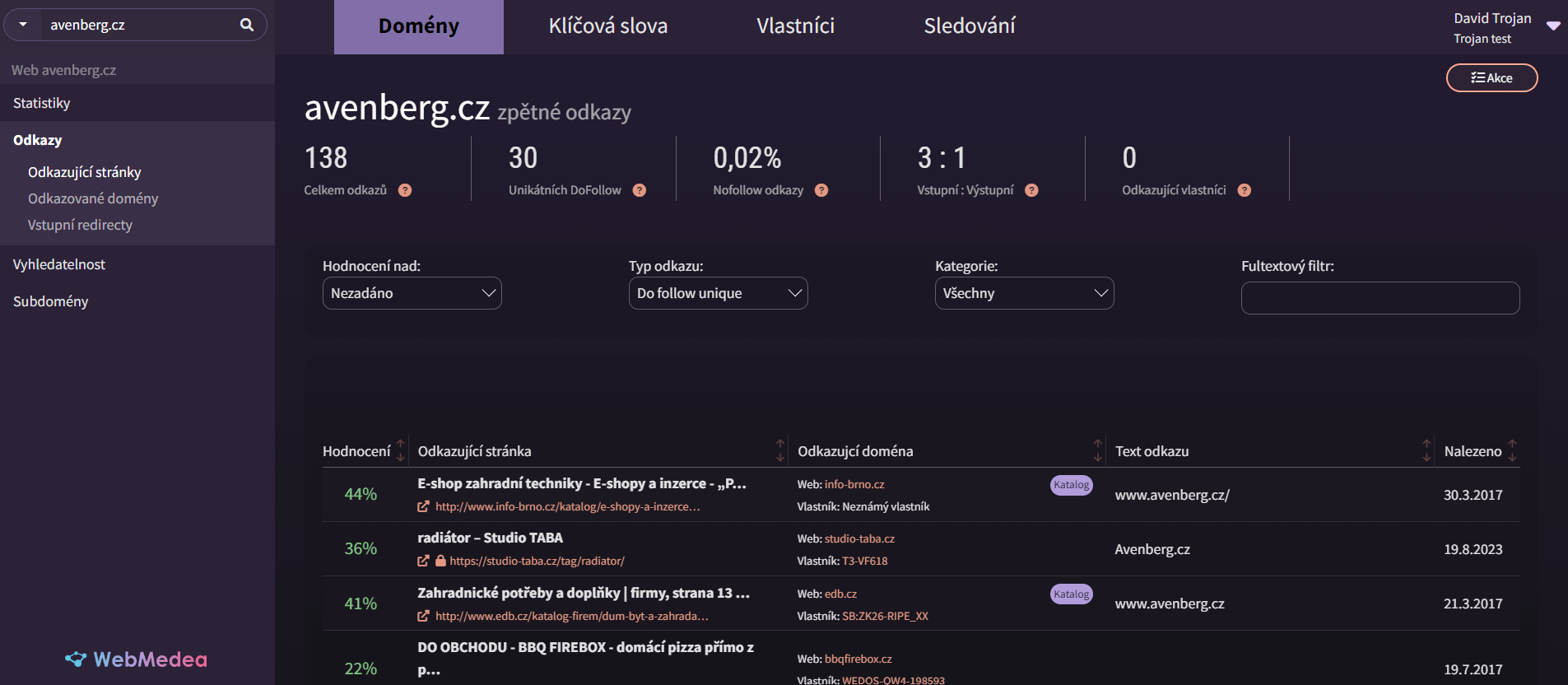
The infrastructure of WebMedea is divided into four main parts: registries, master, slave and web part. The slave services are completely implemented in Python and, together with the master and registries, form a microservices architecture built on the Spring Boot library. The master and registries are written in Java and the registries are integrated on top of ScyllaDB, a scalable NoSQL database based on the C port of Cassandra. The ScyllaDB database is optimized for large volumes of data, but does not include some operations such as merging, aggregation, or full-text search.
Registries are a key application service that manipulates the data in the database. In addition to basic operations such as storing, selecting, and deleting data, they also contain logic to efficiently handle large volumes of data and retrieve data for different views.
The master part of the application works based on the principle of master jobs, which are further divided into sequential and queue jobs. Queue jobs communicate through RabbitMQ and are prioritized according to the importance of the domains or keyword searches they process. Sequential jobs periodically scan the database, prioritize and queue the jobs. Due to the scalable architecture, there can be multiple queued jobs for each task.
Due to the huge amount of data the application processes, efficient caching of precomputed data and results is implemented. This cached data serves as the basis for building various views and data in the web application, which is implemented using PHP, HTML and JavaScript and communicates with the master to retrieve the data. Direct contact with the master is required to communicate with the application API. Overall, WebMedea's infrastructure is designed to efficiently handle large volumes of data and provide users with robust analytical tools. The application development is handled by a development team led by Jiří Kynčl, Josef Smolka and Marek Rost.
What we use WebMedea for at TRITON IT
At TRITON IT, WebMedea is an indispensable tool for efficient work in all departments. In the sales department, it is mainly used to search for opportunities and obtain information about potential clients or new competitors. Whenever a new website or service appears, just enter the URL into WebMedea and the application will quickly provide information about its success and visibility in search engines.
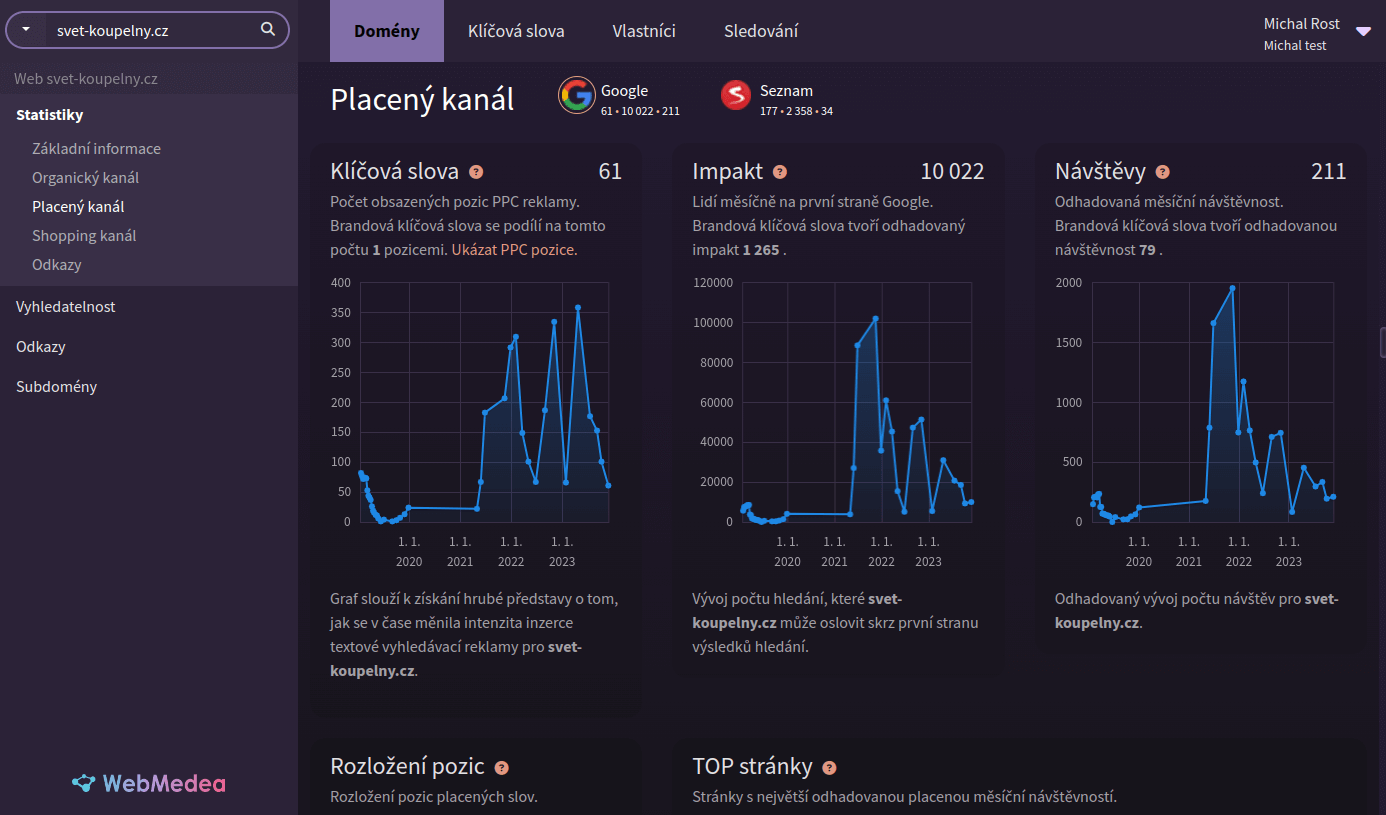
The content department uses WebMedea for detailed analysis of keywords that are key to content creation. Before writing articles, we perform a mini keyword analysis to identify the most searched and relevant words that should be included in the text. We also track the success of content from competing domains and analyze which content attracts the most visitors.
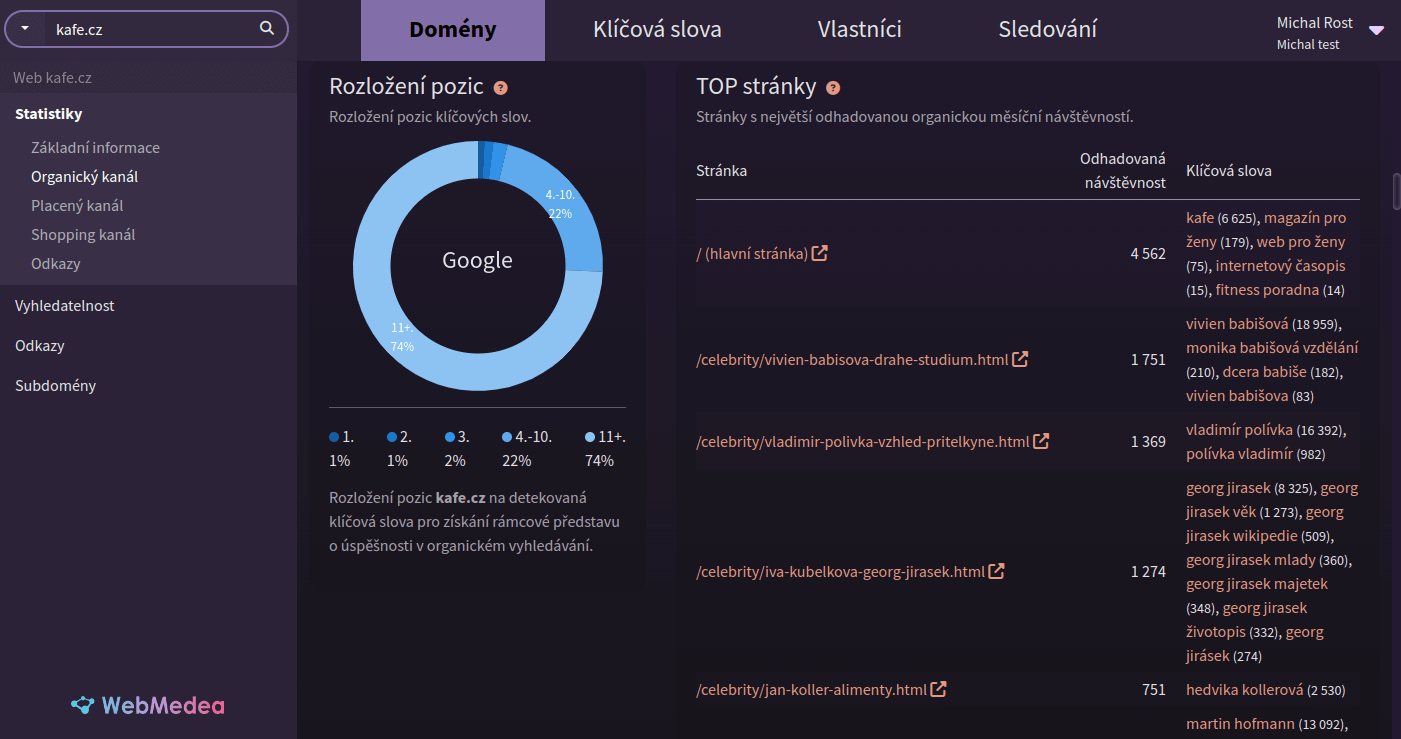
In conjunction with social media, WebMedia is used to select subtopics and content directions that correspond with current interests and trends. In this way, it is possible to effectively reach the target group on social networks and increase audience engagement.
Within PPC campaigns, WebMedea is a key tool to determine the extent of our clients' competitors' advertising, the distribution of advertising targeting over time (year-round advertising, seasonal advertising) and the priority within products and services when advertising. This allows us to optimize PPC strategies and achieve greater campaign efficiency and effectiveness.
WebMedea' s web frontend is available to the general public as of September 1, 2023.